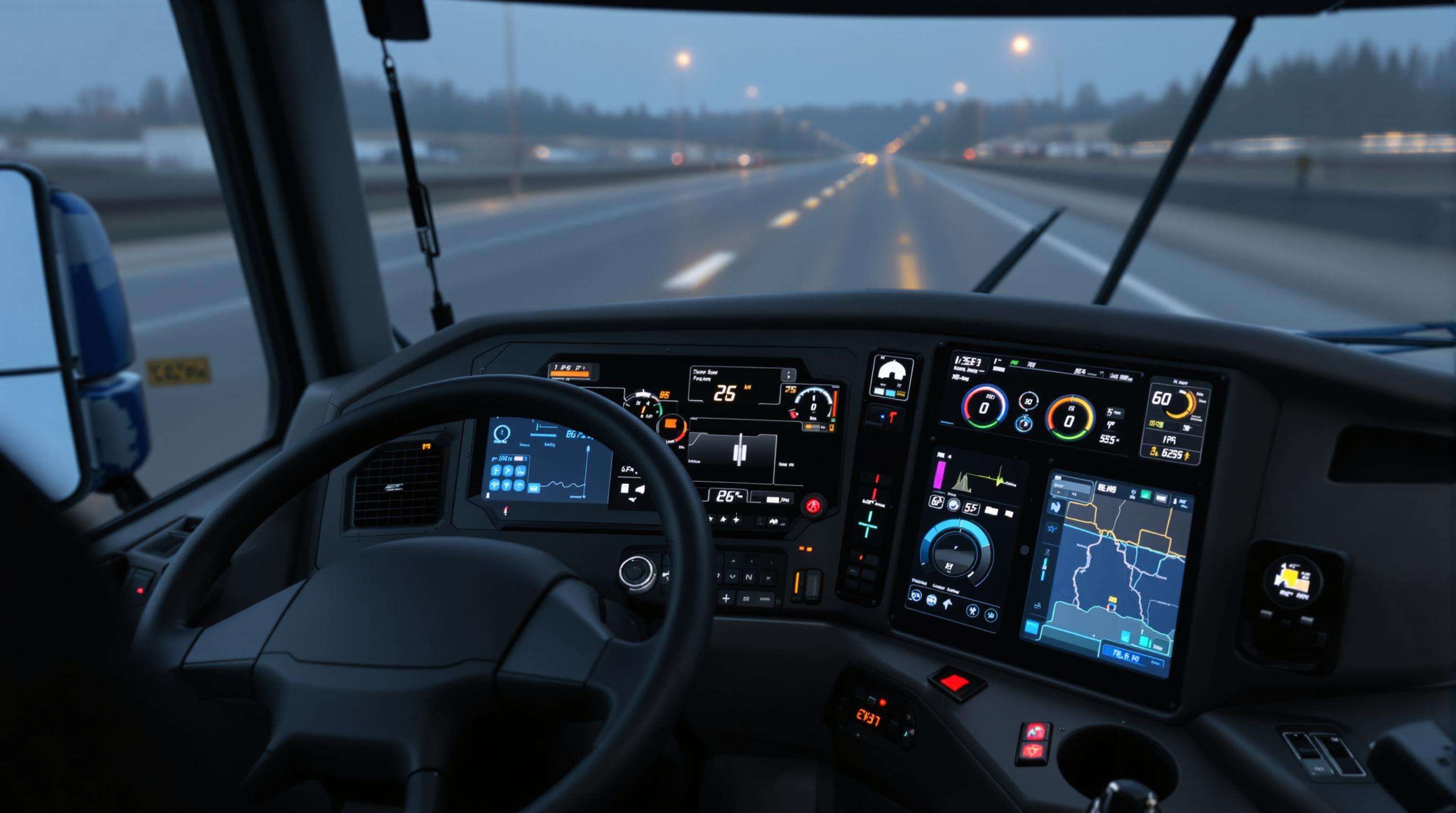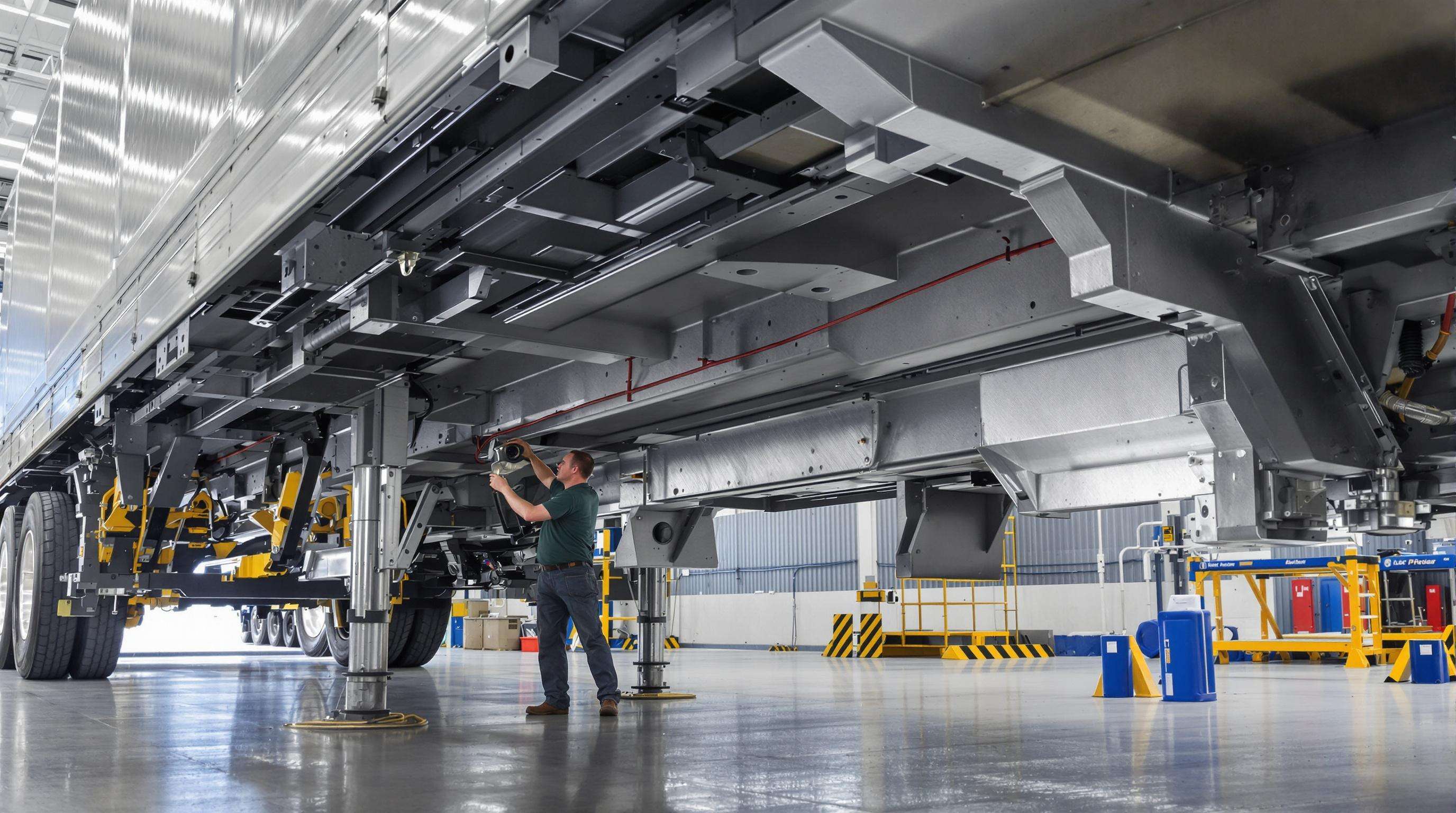Optimizing Your Semi Truck Trailer for Efficiency
Aerodynamic Design and Fuel Efficiency in Trailer Semi Trucks
The role of aerodynamics in reducing fuel consumption for semi-trailer trucks
When driving on highways, aerodynamic drag takes up more than half the energy used by those big semi trucks pulling trailers behind them. The American Transportation Research Institute tells us that when there's more wind pushing against these vehicles, their fuel efficiency drops right along with it. Looking back since the 1970s, we've seen real progress in making tractor-trailers more streamlined. Back then, they had a drag coefficient around 0.80, but now it sits closer to 0.65 after all those design changes. That 20 percent drop might not sound huge, but it actually saves quite a bit of diesel over time. Considering fuel alone makes up almost 40% of what fleets spend running their operations, getting better at managing airflow around these massive rigs continues to be one of the best ways to boost how efficiently goods get moved across country roads and interstates alike.
Key design innovations: Trailer skirts, boat tails, and gap fairings
Three major technologies dominate aerodynamic retrofits:
- Trailer skirts: Side-mounted panels that reduce turbulent airflow beneath the trailer, delivering 4–7% fuel savings
- Boat tails: Rear-mounted devices that taper the trailer's back end, reducing drag by up to 5%
- Gap fairings: Flexible seals that close the space between tractor and trailer, minimizing vortex formation
When combined, these features can reduce fuel consumption by up to 10% on highway routes. Their strategic placement optimizes pressure distribution across critical airflow zones, enhancing overall drag reduction.
Case study: Fuel savings from aerodynamic retrofits in Class 8 fleets
A Midwestern logistics provider retrofitted 200 Class 8 trucks with full aerodynamic packages. Over 18 months, the fleet achieved:
- A 9.98% improvement in fuel economy (6.8 to 7.5 MPG)
- Annual savings exceeding $4,300 per truck
- A reduction of 23 metric tons of CO₂ emissions per vehicle
Highway-dominant routes showed 22% greater fuel savings than mixed-terrain operations, underscoring the speed-dependent benefits of aerodynamic efficien
Controversy Analysis: Cost-benefit trade-offs of aerodynamic upgrades
Efficiency improvements have been well documented, yet many still struggle to adopt these technologies. Retrofitting trailers usually runs between seven thousand five hundred to ten grand each, which puts serious strain on independent truckers trying to stay afloat. For companies that don't hit the road enough miles (anything below seventy thousand a year), it can take over eighteen months just to see a return, making it tough for small businesses to justify spending upfront cash. Then there's the issue with those sleek trailer skirts getting damaged when roads get icy or when trucks venture off pavement. Still, with diesel prices climbing higher than ever before and environmental rules getting stricter by the day, more fleet managers are starting to see value in these upgrades. The smart money knows where to focus too – big rigs that spend most of their time crisscrossing highways tend to reap better rewards from these investments compared to vehicles stuck dealing with local deliveries all day long.
Technological Integration: IoT, AI, and Telematics for Real-Time Efficiency

How Telematics and IoT Sensors Enhance Trailer Semi Truck Performance Monitoring
Today's big rigs are equipped with all sorts of high tech stuff like telematics and those little IoT sensors that keep an eye on things such as tire pressure, how healthy the engine is running, and what's going on with the cargo while driving down the highway. The monitoring systems actually gather around 200 different pieces of information from each truck, which helps people who manage fleets spot problems early on. Think about brake pads wearing down or when the refrigeration unit starts acting up before something goes wrong completely. Take temperature sensors for instance. They've been shown to catch potential tire blowouts pretty accurately, clocking in at about 89% success rate according to some research done back in 2023 by Ponemon Institute. That kind of warning system cuts down on those pesky roadside breakdowns by roughly one third, making life much easier for everyone involved in transportation logistics.
AI-Driven Diagnostics and Predictive Maintenance in Modern Fleets
AI analyzes historical and real-time sensor data to detect patterns and forecast component failures 7–14 days in advance. Fleets using AI-powered predictive maintenance reduced unplanned downtime by 41% and saved $18,000 per truck annually in repair costs. This shift from reactive to predictive maintenance enhances reliability and lowers lifecycle costs.
Data-Driven Route Optimization Using Real-Time Traffic and Weather Inputs
Dynamic routing algorithms integrate live traffic, weather, and infrastructure data—such as bridge height restrictions—to automatically reroute trucks around delays. This reduces idle time by 22% and cuts fuel consumption by 6–9% per trip. By balancing delivery timelines with fuel efficiency, these systems support both operational and environmental goals.
Lightweight Materials and Sustainable Design in Trailer Semi Trucks

Impact of Composite and Aluminum Materials on Fuel Efficiency and Payload Capacity
Switching from steel to aluminum alloys or carbon fiber can cut down a trailer's empty weight anywhere between 2,800 to almost 4,500 pounds. That kind of weight reduction typically boosts fuel efficiency somewhere around 8 to 12 percent according to industry data. Looking at recent findings from the 2024 Material Efficiency Study, transportation companies that adopted these lighter materials saw their cargo carrying ability jump by about 15%, all while burning roughly 1.2 fewer gallons of diesel every 100 miles driven. Magnesium parts are now coming onto the scene as well, offering even better weight savings at about 33% more than what aluminum provides. However, working with magnesium demands specific production methods that many shops aren't equipped for yet, which explains why it hasn't become widespread across the industry just yet.
Industry Paradox: Durability Concerns Versus Sustainability Goals
The use of lightweight materials definitely helps vehicles run better and meet those strict emission standards, though there's a catch. According to NHTSA data from last year, fixing cars made with these lighter materials ends up costing around 23 percent more when they get damaged in accidents. The industry is working on ways around this problem though. Some pretty cool innovations are coming through, such as those special coatings that can actually heal themselves when scratched, along with car parts designed so they can be replaced individually instead of whole sections. These approaches seem to cut down on overall waste during a vehicle's life cycle by roughly forty percent, which makes sense for anyone concerned about how long things last before needing replacement. Another interesting development involves mixing different materials together strategically throughout the frame. For instance, combining traditional steel where it matters most for safety with lighter aluminum elsewhere creates a kind of best-of-both-worlds situation that manufacturers are currently testing out in their labs.
Electrification and the Future of Trailer Semi Truck Efficiency
Current state of electric and hybrid trailer semi truck adoption
The shift toward electric vehicles is picking up steam across regional transport and those crucial last mile deliveries too. Full blown electric trucks still make up just under 5% of all Class 8 fleet vehicles according to recent data, but companies running test programs have found them working pretty well for shorter trips between distribution centers within a 300 mile radius. Many businesses are turning to hybrid options as an interim solution when dealing with limited battery range versus actual power needs. This approach becomes especially attractive in areas where charging stations aren't yet widespread enough to support pure electric operations without major logistical headaches.
Charging infrastructure challenges and battery weight trade-offs
The price tag on those high capacity megawatt chargers runs around $145k per unit according to Ponemon's research from last year, which obviously creates problems when trying to scale operations. And let's not forget about the battery situation either. To get that sweet 500 mile range, trucks need these massive batteries weighing anywhere between eight thousand to ten thousand pounds. That kind of weight seriously cuts into what can actually be carried in the cargo area. Then there's the whole cold weather headache. When temperatures drop below freezing, the vehicle's thermal management system starts working overtime just to keep things running, and this can slash driving range by almost half in really icy conditions. For logistics companies planning their routes, putting charging stations at key points along main freight roads becomes absolutely critical if they want to avoid wasting time on unnecessary detours while keeping their fleet operational as much as possible.
Regulatory compliance and emission standards driving electrification
Governments around the world are pushing harder toward zero emission vehicles these days. The EU has set an ambitious target requiring heavy duty trucks to cut their CO2 output by 60 percent before 2030 arrives on the scene. Meanwhile across the pond, California already got tough with regulations demanding all drayage trucks operate on zero emissions beginning as early as 2024. Some places have even started offering special permits that let operators carry an extra 4 tons worth of cargo to make up for the added weight of batteries in electric models. Looking ahead, most experts believe we'll see electric semi trucks making up well over 30% of all new truck purchases by 2033. This growth isn't just about following rules either many fleet managers calculate significant savings over time when they switch to electric powertrains.
Strategic Load and Route Optimization for Maximum Efficiency
Maximizing Payload While Adhering to Weight Regulations and Safety Standards
Getting the load right means staying within those weight limits on axles - usually around 20 thousand pounds for a single axle and 34K for tandem setups - while still packing as much freight as possible. Most fleet operators rely on special software that calculates payloads dynamically along with digital scales inside trailers to keep track of how weight is distributed throughout the journey. Secure loading matters a lot because when cargo shifts during transport, it actually causes about one third of all truck rollover accidents according to recent NHTSA data from last year. This affects not just driver safety but also whether companies meet their regulatory requirements or face penalties down the road.
Integration of Historical and Real-Time Data in Route Planning
Advanced route optimization combines predictive analytics with live data:
- Historical traffic patterns inform optimal departure times
- Real-time weather feeds detect crosswind and visibility risks
- Toll and fuel pricing databases identify cost-efficient paths
- Dynamic rerouting avoids congestion and construction
AI-driven systems balance delivery schedules with fuel conservation, with some fleets reducing left turns to cut idling incidents by 15%.
Predictive Maintenance and Monitoring Systems
Integrated sensors continuously monitor key trailer systems:
- Tire pressure sensors: Maintain ±1 PSI accuracy, improving fuel economy by 2.5%
- Brake wear indicators: Forecast replacement needs 200 miles before failure
- Reefer diagnostics: Alert on temperature variance, preserving 97% of perishable cargo
- Structural stress monitors: Detect fatigue in chassis welds
These systems reduce maintenance costs by 25% through early intervention, with unified dashboards prioritizing high-risk units for proactive servicing.

